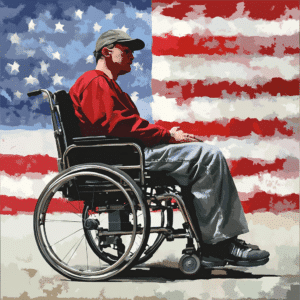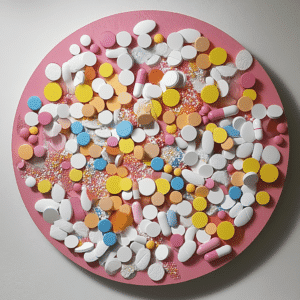Mothers Against Drug Deaths: The Hard-Hitting Reality
Every mother’s worst nightmare came true for Janet when she discovered her son had overdosed. “He was my sunshine,” she recalls, her voice colored with a mixture of pain and fondness. Her story is one that unfortunately resonates with countless others, testimonies that lay bare the brutal truth wrapped in the devastating crisis of drug deaths.
In 2024 alone, the national overdose rate was reported to be 21.6 deaths per 100,000 residents. Among youth and young adults aged between 15 to 24 years, the annual overdose death rate is an alarming 12.6 out of every 100,000, a statistic that is a bleak reminder of the considerable work that lies ahead.
Enter Mothers Against Drug Deaths, a not-for-profit organization that has risen from the tangible grief of parents like Janet. Mothers Against Drug Deaths innately understand the enormous hole such tragedies leave in families as they were born out of a similar heartache. Together, they stand as staunch advocates against drug deaths, underlining their significance in the battle against the grim reaper of substance abuse.
Understanding the Drug Epidemic: A Mothers Against Perspective
Over the years, the drug epidemic has morphed, tracing a deadly path across demographics and socioeconomic strata and robbing parents of their children. According to the experts at Mothers Against Drug Deaths, the epidemic disproportionately engulfs vulnerable populations- often those lacking the resources to escape its fatal wave.
The origins of the drug epidemic are tangled in a web of socio-economic factors, policy changes, and advancements in medicine. History underscores that the issue isn’t a standalone crisis but rather a confluence of many. Members of Mothers Against Drug Deaths understand this; they’ve lived it, and their insight guides their informed commentary on the epidemic. They navigate the fine line that separates understanding from glamorizing, rightfully acknowledging that the fight against drug death is an uphill battle.

| Subject Area | Information |
|---|---|
| Prevention | Improve opioid prescribing, reduce exposure to opioids, prevent misuse, and treat opioid use disorder. |
| Recognition | Recognizing an overdose can be challenging; treat the situation as an overdose if unsure, to possibly save a life. |
| Overdose Death Rates | National OD rate is 21.6 deaths per 100,000 residents. For youth and young adults aged 15-24, the OD rate is 12.6 per 100,000, 41.9% lower than national average. |
| Reaction After Overdose Death | Survivors often feel guilt, blame others for the addiction or death, and experience helplessness, anxiety, depression, shock, and anger at the deceased. |
| Inheritance | Substance use disorder often runs in families due to genetic components, making family history a potential indicator of vulnerability to addiction. |
Moms Against: Turning Grief into Action
Imagine a woman transformed by grief, harvesting her pain as a tool for change. She fights, optimizing her personal adventure to inspire and empower others. Stories of these mothers — Moms Against — are the beating heart of the organization.
Moms Against underscores the power individuals hold in creating ripples of change. To them, proactive actions can range from education and policy changes, to building rehabilitative programs, raising awareness, or working towards destigmatization. Dianna Dahlgren, a well-known fitness model and devoted mother, once indicated, “Every little action, when done with the right intent, helps to remove the shroud of shame that surrounds drug addiction.”
Mothers Against: A Deep Dive into the Organizational Strategies and Goals
Mothers Against Drug Deaths focus on strategizing for prevention. They understand that prevention beats cure. Their strategies intertwine research, community-level work, and policy recommendations aimed at curbing the drug crisis.
Future goals of Mothers Against include nationwide educational programs and increased support for bereaved parents. They embrace tangible plans, utilizing data to guide their actions progressively. Consider, for instance, their care package For someone who lost a baby, a thoughtful gesture supporting parents in their darkest hours.

Drug Epidemic Memorial: Honoring Lives Lost and Sparking Dialogue
The Drug Epidemic Memorial — a poignant tribute to lives lost, is a stark reminder of the devastation caused by drug deaths. Yet, it serves as more than a place of remembrance. To Mothers Against Drug Deaths, the memorial carries a dual purpose- acknowledgment, and advocacy.
The annual memorial events remind the community of the urgency to address drug deaths. They stir conversations, instigate debates and inspire changes in policy. Looking back at the 2024 Memorial, it’s clear how much a simple event can force society to revisit the way it perceives the epidemic.
The Intersection of Mothers Against Drug Deaths and Mothers Against Drugs
While both organizations are dedicated to combating drug addiction, their missions, and strategies differ slightly. Mothers Against Drug Deaths focuses on prevention and support for families affected by substance abuse fatalities. In contrast, Mothers Against Drugs emphasizes rehabilitation and education on substance misuse.
Yet they operate in parallel, complementing each other while providing a comprehensive approach to addiction. There are significant opportunities for collaboration, particularly in creating unified strategies and mobilizing their combined forces to broaden their impact.

Herald of Hope: Future Projections and Necessary Actions
Trends point to an encouraging shift towards a more empathetic, integrated approach to combating drug deaths. Strategies like improving opioid prescribing, reducing exposure to opioids, preventing misuse, and timely treatment of opioid use disorder are gaining currency. Key here is recognizing an opioid overdose — that’s where education comes in. If in doubt, better err on the side of caution.
Individuals, schools, communities, and governments can back Mothers Against Drug Deaths in various ways: volunteering, supporting legislation, donations, or simply spreading awareness.
The Pioneering Vanguard: Reflections on the Journey of Mothers Against
Mothers Against Drug Deaths encapsulates resilience and hope. As they reflect on their journey, the camaraderie among grieving mothers stands out. Their shared focus has taken them from private pain to public advocacy.
Their key victories, like amended legislatives and increased community awareness, have positively impacted the drug epidemic. Mothers Against’s journey echoes Elizabeth Vargas ‘s resilience, inspiring hope in the darkest corners of despair.
Continuing the Crusade: Mothers Against Beyond 2024
Looking ahead, Mothers Against Drug Deaths is determined to uphold its mission to prevent drug deaths and support bereaved families. Believing in the power of persistence and hope, their journey continues beyond 2024.
Ending drug overdose fatalities may feel like an uphill battle. Yet Mothers Against holds on, seizing each day as an opportunity to make a difference. They invite readers to join their crusade and transform grief into meaningful actions.
How can you prevent overdose deaths?
Preventing overdose deaths is a community effort, y’know? Encourage those struggling with addiction to seek help, maybe provide them with information on local treatment programs. Never be afraid to carry and learn to use Naloxone, a life-saving antidote for opioid overdose. Above all, keep the lines of communication open – you never know when that lifeline could save a life.
What is the death rate for 21.6 drug overdose per 100000?
The death rate of 21.6 drug overdoses per 100,000 is pretty significant. Imagine, in a city of 100,000, 22 people can lose their lives to drug overdose. Heartbreaking, isn’t it? It’s a stern reminder of the urgency of combating drug abuse.
What are the possible reactions that a family may have to the death of a family member from a drug overdose?
Families dealing with a drug overdose death can have a whole stew of emotions. Anguish, guilt, anger—you name it. Some may feel a sense of relief mixed with sorrow, especially if the deceased had a long battle with addiction. It’s a rollercoaster, for sure!
Can addiction be passed down to children?
Addiction isn’t necessarily passed down to children like a pair of old jeans, but there are genetic and environmental factors that can make the child prone to addiction. Substance abuse in the family environment can certainly be a trigger.
What is the first remedy for overdose?
The first remedy for an overdose? Call 911! Quick action can save lives, so don’t dilly dally. Also, if you have it, administer Naloxone and perform CPR while waiting for help.
What is never use alone?
Never Use Alone is a movement advocating the concept of not using drugs alone to minimize the risk of fatal overdose. If something goes awry, there’s at least somebody around to hit the panic button!
What state has the most drug deaths per capita?
West Virginia, if you can believe it, holds the grim record for the most drug overdose deaths per capita. A tragic stat, indeed! It’s a call-to-arms against the scrounge of drug abuse.
Is Oxycontin still available?
Yes, Oxycontin is still available. Despite its notorious reputation, it remains in pharmacies as a pain medication. However, regulations around its usage are tighter than ever since misuse can quickly end in addiction.
Why are opioids addictive?
Opioids are addictive because they mess with your brain’s reward system. They trigger the release of endorphins, your brain’s feel-good neurotransmitters. Over time, dependency forms and voila – addiction.
What are the effects of a parent dying?
Losing a parent can deliver quite a blow to a child. It can lead to feelings of insecurity, fear, and sadness. Long term, there can be issues with attachment and trust. It’s a tough row to hoe for sure.
What are the stages of grief from toxic family?
The stages of grief from a toxic family might be denial, anger, bargaining, depression, and acceptance. Yet, the feelings can be more complex or muddled. It might feel like a never-ending roller coaster ride.
Is a family member dying traumatic?
Yes, a family member dying can be a traumatic event. It can lead to intense emotional responses called grief, which can affect a person’s mental and physical health.
What are the psychological effects of addicts on children?
Addicts can leave a hefty psychological toll on children. Fear, confusion, guilt, shame, or even responsibility for their parents’ addiction. It’s like living in a constant storm of uncertainty.
What are the biological causes of drug abuse?
Biological causes of drug abuse can be genetic predisposition, abnormalities in brain function, or mental disorders. In other words, sometimes your own body plays the traitor.
What is the national overdose rate per 100000?
The national overdose rate per 100,000 is around 20.7. A horrifying stat, that’s enough people to fill a small town, every year.
Is overdose a leading cause of death CDC?
You bet, overdose is indeed a leading cause of death according to the CDC. Rising addiction rates mean our fight against drug abuse is more important than ever.
How much has the rate of overdose deaths increased in the US?
The rate of overdose deaths in the US has been climbing faster than a hare on hot bricks, by nearly 4 times since 1999. Talk about a losing fight!
What drug causes the most deaths in Ohio?
In Ohio, Fentanyl, that nasty opioid, causes the most drug-related deaths. It shows we need a better game plan to tackle opioid abuse.




























